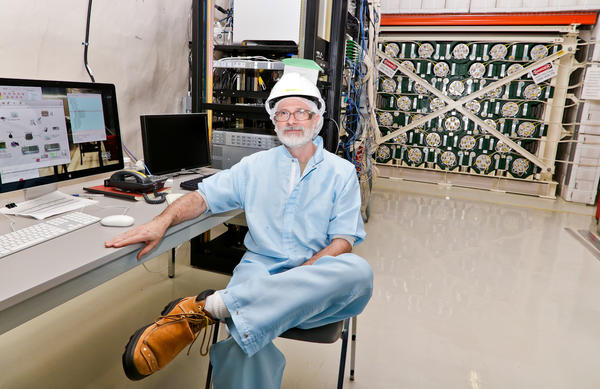HALO experiment joins SuperNovae Early Warning System

SNOLAB– October 16, 2015
The HALO supernova neutrino detector in SNOLAB has joined the international SuperNova Early Warning System (SNEWS). This worldwide network of neutrino detectors looks for bursts of neutrinos emerging from a core-collapse supernova in our galaxy, the last stage in the life of a massive star. Even though a core-collapse supernova is a spectacular sight optically, with the star’s brightness rivaling that of the entire host galaxy for a few weeks, 99% of the energy is actually released in the form of neutrinos. The neutrino burst emerges hours before the optical radiation, and thus provides an early warning signal for optical astronomers. As well, the energy and types of neutrinos emitted give direct information about the nuclear processes occurring in the core of the exploding star.
Laurentian University’s Dr. Clarence Virtue, a full professor of Physics in the Faculty of Science, Engineering and Architecture, leads the experiment as the Principal Investigator. “The objective of SNEWS is to maximize the scientific opportunity of the next galactic supernova, by promptly alerting the astronomical community,” said Dr. Virtue. “HALO is now a part of the network.”
SNEWS currently includes neutrino detectors in Japan (Super-Kamiokande, KamLAND), Italy (LVD and Borexino), China (Daya Bay), Antarctica (ICECUBE), and Canada (HALO). The Canadian SNO detector was formerly a member, and the upgraded SNO+ will rejoin in the near future.
Dr. Nigel Smith, SNOLAB Director, congratulated the HALO experiment team; “The connection of the HALO supernova neutrino detector to the SuperNovae Early Warning System is a tremendous achievement for the HALO collaboration, showing the maturity of the detector technology and understanding of data collected. SNOLAB is delighted that our facility once again forms part of the trigger for the exciting possibility of learning new physics from a supernova explosion, and that HALO is one of the magnificent seven experiments forming that trigger.”
If two or more detectors simultaneously sense bursts of neutrinos, SNEWS issues an early warning to optical astronomers on the subscription list. HALO is constructed from helium-3 neutron counters embedded in 79 metric tonnes of lead, thus the acronym HALO from Helium And Lead Observatory. HALO is unique in that it is primarily sensitive to electron-type neutrinos, whereas the other detectors are primarily sensitive to anti-neutrinos. A core-collapse supernova is expected only two or three times per century in our galaxy.
For more information:
Samantha Kuula
Communications Officer, SNOLAB
(705) 692-7000 x2222
Samantha.Kuula@snolab.ca